Perranporth
OS Grid ref:- SW756540
The popular Cornish resort of Perranporth lies six miles south-west of the town of Newquay.
The spectacular Beach at Perranporth
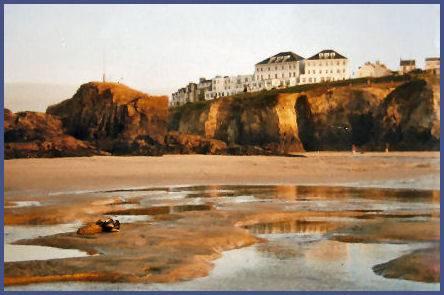
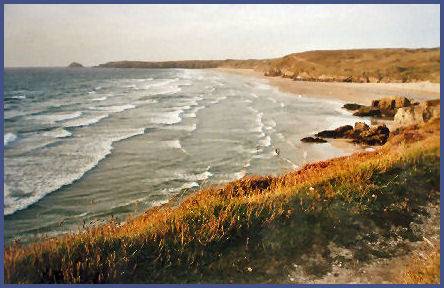
The town boasts an excellent three mile sandy beach and is popular with surfers, the southern end of the beach is backed by dramatic cliffs, with natural arches, stacks and rockpools. The beach is framed by the rugged heather clad cliffs of Cligga Head and Penhale Point. A lifeguard service operates from May to September. Dogs are allowed on the beach in the winter months.
Perranporth offers a range of facilities, shops, cafes restaurants, pubs (including one, the Watering Hole which is situated on the beach) and a range of accommodation along with a boating lake and 19 hole golf course. There are some excellent cliff top walks in the area. The Millennium Sundial, a recent addition, stands by the beach, it tells Cornish time, which is twenty minutes ahead of GMT.
Boscawen Clock Garden
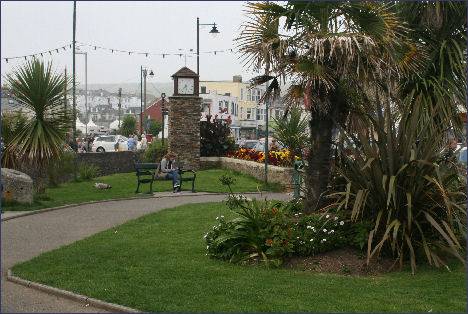
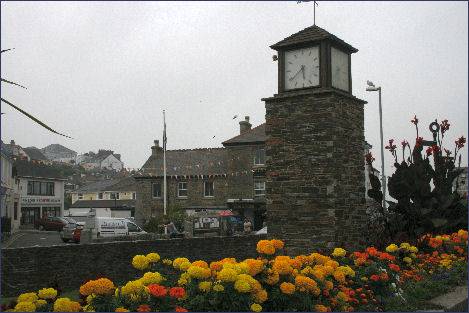
Perranporth was a tin mining village in the nineteenth century. The Perranzabuloe Folk Museum housed in the Victorian Oddfellows Hall, the museum offers an insight into the social and industrial past of Perranporth and surrounding villages. Displays include: mining; farming; the railway; Cornish costume and a replica of a Cornish kitchen.building.
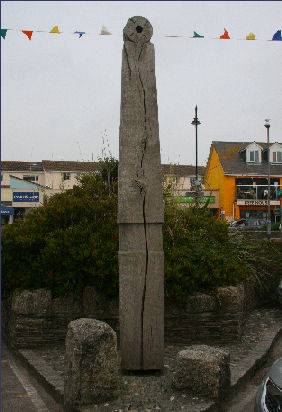 The parish church of St. Piran was built in 1804, St. Piran, an Irish missionary was the patron saint of tinners. Piran is generally also regarded as the patron saint of Cornwall, although Saint Michael and Saint Petroc also have some claim to the title. Saint Piran's Flag, which is a white cross on a black background, is displayed as a symbol of Cornwall. Saint Piran's Day falls on 5 March.
The parish church of St. Piran was built in 1804, St. Piran, an Irish missionary was the patron saint of tinners. Piran is generally also regarded as the patron saint of Cornwall, although Saint Michael and Saint Petroc also have some claim to the title. Saint Piran's Flag, which is a white cross on a black background, is displayed as a symbol of Cornwall. Saint Piran's Day falls on 5 March.
There have been three churches of St. Piran in Perranporth, the Oratory of St. Piran was constructed in the seventh century, when it was an important early Celtic monastery and a place of pilgrimage in the Medieval era, which was said to contain the venerated relics of St. Piran.
Now situated in the sand dunes, it became submerged by drifting sands in the eleventh century and had to be abandoned. Following its excavation in the last century, it had to be reburied in 1981 to protect the structure and the site is now marked by a granite memorial stone. bearing the inscription "Beneath this stone is buried the Oratory which bears his name. Erected on the site hallowed by his prayers. October 1980."
A model of the oratory can be found in the Perranzabuloe Folk Museum. Nearby are the ruined walls of the Norman parish church which was built circa 1150 which also had to be abandoned to the shifting sand in 1804. Beside it stands a cross.
An impressive Iron Age fortification, St. Piran's Round, or Plen-an-gwary in Cornish,lies just outside Perranporth (OS grid reference- SW779545). Originally an Iron Age/Romano-British enclosed farmstead, it was adapted in the Middle Ages as a playing place where medieval miracle plays were performed. In 1969 and 1973 re-enactments of the Cornish medieval plays were performed there. There is a stile into the enclosure where the earthwork stands and a flagstone entrance into the interior.
The author Winston Graham lived in Perranporth and his famous Poldark novels, which were televised, are based on the history of the area and its local families. "Hendrawna Sands" in the novels is Perranporth beach. Denis Healey, inventor of the Austin Heally was born in Perranporth.
The Lowender Peran is an annual Perranporth festival celebrating Cornwall's Celtic connections. A fun, family friendly event, the weekend consists of ceilidhs (barn dances), concerts, dance and music workshops, storytelling, music sessions and a Celtic craft market.
A walk to St. Pirans Oratory
Distance - around 4 miles
Duration - about 2 hours
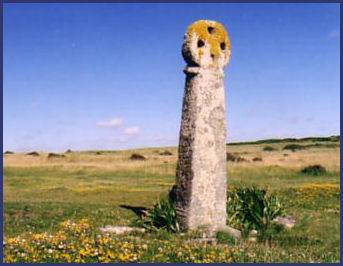 *Parking on the minor road that branches from the B road about a mile east of Perranporth, take the path that commences opposite the lane from Rose.
Pass through the gate and continue along the path which is marked with white stones.
*Parking on the minor road that branches from the B road about a mile east of Perranporth, take the path that commences opposite the lane from Rose.
Pass through the gate and continue along the path which is marked with white stones.
*Bear to the right following the acorn posts of the Coastal Path heading towards the stone cross which is visible on the skyline. The celtic cross dates to about 900 A.D and marks the site of the Norman church which was built there to replace St. Pirans oratory.
*Continue downhill heading towards the sea crossing the sand dunes until reaching the mound which covers St. Pirans Oratory, which is topped with a rough granite block marked 'St. Piran'.
Continue towards the sea, with extensive views on all sides. Follow the left path, cross a road and carry on along the cliffs, Perranporth is soon within view, the way slopes gently down to the beach.
*Cross the sands and keep left to meet the river, follow the track beside the river out onto the road. Turn left and left again at a waymarker, climbing steep steps. Remain to the left of the clubhouse and cross the road to a stile. Continiue diagonally up a field toward a goal post. Another stile leads over the road to a path which leads to a lane. A right turn will return you to your car.